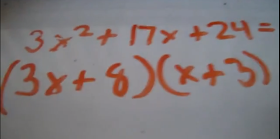I had a student talk about cross multiplication like it was some kind of dark magic. Here is an explanation of WHY cross multiplication works.
You should be able to see it. The relationship is one to three. in the second set the relationship is still one to three...but it's two to six. You can play games where you get one and the student gets three. In that case you might have put a two down and the student might get out 3 twos.
But here we are looking at the relationship in a slightly different way.
You can see how it works: if I have the rectangle and one side or two sides of the rectangle...and this is what we are employing to problem solve. Concept three: we form rectangles to facilitate counting.
Now from there we can do problem solving in Geometry with triangles and other shapes..."this is to this as x is to this..."
 For example 6 : 15 as 14 : x...of course you could cross multiply and divide but there is an easier way. If you can start using rectangles in you mind problems like this will be easy to see. And even if you can't, the concepts are still easier to understand. This also points out the need for mastering multiplication tables. People will say who need it now that we have calculators...well being able to punch a calculator will not help you recognize 6 and 15 are on the threes multiplication table. And people often lament that calculators don't help with fractions very much...
For example 6 : 15 as 14 : x...of course you could cross multiply and divide but there is an easier way. If you can start using rectangles in you mind problems like this will be easy to see. And even if you can't, the concepts are still easier to understand. This also points out the need for mastering multiplication tables. People will say who need it now that we have calculators...well being able to punch a calculator will not help you recognize 6 and 15 are on the threes multiplication table. And people often lament that calculators don't help with fractions very much...They do but only for computation not for understanding the math. Some kids can "see" right off the bat that on top we have 2 threes and 2 sevens and if we have 5 threes on the bottom we must have 5 sevens too. Others take more explaining. Adults always take more explaining.
 Here I drew in the rectangles. Use you imagination to see the sides. The whole thing is six and one side is two the other side MUST be 3. The whole thing is fourteen and one side is 2 the other side HAS TO BE 7. If the "top" is 3 the bottom is 3, if the top is 7 the bottom has to be seven because the relationships are the same.
Here I drew in the rectangles. Use you imagination to see the sides. The whole thing is six and one side is two the other side MUST be 3. The whole thing is fourteen and one side is 2 the other side HAS TO BE 7. If the "top" is 3 the bottom is 3, if the top is 7 the bottom has to be seven because the relationships are the same.So if I know the sides are 7 and 5 the whole thing HAS TO BE 35. We love math. It isn't going to be different tomorrow. No exceptions. And you should be able to see the relationships are the same two to five...doesn't matter what it is.
2x/5x in this case we have 3 and 7...the logic also works no matter where we put the x.
 Then we the student sees this, it makes perfect sense. It's not some kind of magic or a stupid rule to follow that just is.
Then we the student sees this, it makes perfect sense. It's not some kind of magic or a stupid rule to follow that just is.Students need to see where the rules come from and that makes them easier to understand and then we can work on applications with triangles. We can also work on applications with triangles or rectangles and show how these rules work, but...
It's been my experience that having some experience here first makes a big difference there.
And here is some more covering this topic where we can do it the easy way or the hard way. And if we HAVE to do it the hard way at leaste we understand why it works. Taking the mystery out of the math is important.
This student has just about gotten the concepts mastered. He is a quiet boy so he doesn't say much but he did exclaim, "Ok I get it!" at one point and "that makes it easier to understand..." at another. You will find this response almost universal among students who just learned it the other way...using cross multiplication.
Here is a slightly different way of looking at it using different symbols:
In this method it becomes visually obvious that we are talking about multiples.
There is lots more we can do with ratios but that's enough for now...




